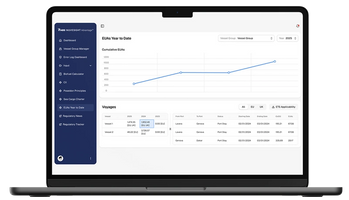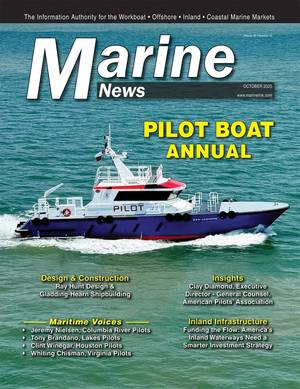Saab to Spearhead NATO's New Underwater Defense Project
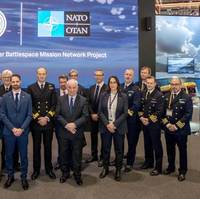
The Saab-led MANGROVE consortium has been selected by NATO to lead the Allied Underwater Battlespace Mission Network project (AUWB-MN), aimed at improving interoperability for maritime uncrewed systems and conventional platforms between allied naval forces.The project, which formally started earlier in September, is designing a Reference Architecture and a Test and Reference Environment for a mission network that leverages both crewed and uncrewed systems, above, on and below the water.The mission network will facilitate rapid and secure information exchange…
HII, Babcock Integrate UUVs with Submarine Weapon Handling and Launch Systems
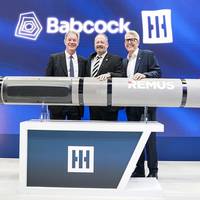
Babcock International Group and HII signed a memorandum of understanding to bring together HII’s REMUS unmanned underwater vehicles (UUVs) and Babcock’s submarine Weapon Handling and Launch Systems (WHLS). The goal of the collaboration is to deliver autonomous launch and recovery of UUVs via submarine torpedo tubes, strengthening the undersea advantage of allied navies. This is the first program of its kind within the Babcock Mission Systems business.As UUVs become increasingly vital to future undersea operations…
Thales, HII Partner to Develop Autonomous Undersea Mine Countermeasure Capabilities
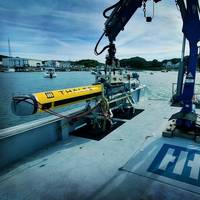
HII and Thales announced the successful integration and field exercise of the Thales SAMDIS 600 sonar with HII’s next generation REMUS 620 medium unmanned underwater vehicle (UUV).The integration demonstrates the compatibility of Thales’ multi-aspect synthetic aperture SAMDIS 600 sonar with HII’s modular, long-endurance REMUS 620 UUV. Together, the systems deliver advanced autonomous mine detection, classification, and imaging, offering naval forces and partners around the world enhanced capability for undersea security…
General Dynamics Mission Systems to Develop Clandestine Mine Delivery System

General Dynamics Mission Systems has been awarded a $15.9 million contract by the U.S. Navy to develop its Mining Expendable Delivery Unmanned Submarine Asset (MEDUSA) system.MEDUSA is a tactical, clandestine mining system using an expendable Unmanned Underwater Vehicle (UUV) that can be launched from a submarine torpedo tube. The U.S. Navy is developing MEDUSA to address the need for an advanced maritime mining system with long-range offensive mining capabilities.The scope of the newly awarded research and development effort includes the design…
UUV Integration Will Transform Submarine Tactics
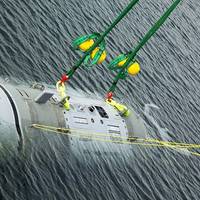
For decades, submarines have been the apex predator, roaming the oceans largely unmolested, gathering intelligence, providing a sea-based nuclear deterrent, and conducting clandestine missions with impunity. As such, these versatile and lethal platforms have been highly sought after by navies around the world, and with advancements in underwater propulsion and quieting technologies, it is perhaps more challenging than ever to detect, localize, and track them. But even as submarines become stealthier…
Subsea Defense: Navy Deepens Commitment to Underwater Vehicles
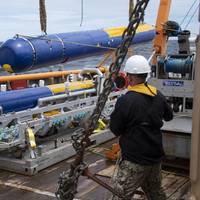
The U.S. Navy uses unmanned and robotic underwater vehicles for a multitude of functions, including environmental sensing, mine hunting, and salvage. The Navy plans to evolve an unmanned systems operating concept that is platform agnostic and capable of operating in highly complex contested environments with minimal operator interaction.The most recent edition of the Navy’s Unmanned Systems (UxS) Roadmap was issued in 2018, and a new version is expected in the near future. The 2018 document states that UxS will operate in every domain…
Port Security: Autonomous ANTX
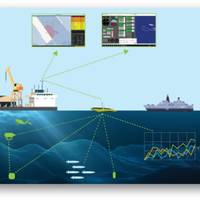
Geophysical seismic surveys and port security may appear to have little in-common. However, it turns out that managing complex marine seismic operations, where 10km-long seismic streamers have to be deployed harmoniously alongside other offshore marine assets, isn’t that dissimilar to managing – and protecting – port facilities.It's an area that ION Geophysical, more known for seismic data acquisition technology, has recently been proving its expertise in, using its Marlin system for marine operations management.
Measuring the Hostile Ocean Beneath Hurricanes
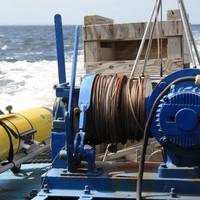
Unmanned Vehicles Collect Data for Improving Storm ForecastsThe influences of ocean conditions and currents on living environments are now more widely appreciated—from the Earth’s climate and severe weather conditions to fisheries and biodiversity. Sustained and widespread measurements are needed to provide essential clues for understanding the oceans, for effective monitoring of environmental changes, and for helping to clarify the long-term effects of global warming.To meet this challenge, ocean researchers have invented various types of unmanned observing platforms.
USN: Knifefish UUV Program Achieves Milestone
The Program Executive Officer for Unmanned and Small Combatants (PEO USC) granted Milestone C approval to the Knifefish Surface Mine Countermeasure Unmanned Undersea Vehicle Program. The decision clears the way for low-rate initial production (LRIP) of the system, PEO USC announced Aug. 23.The Navy is expected to award a LRIP contract to Knifefish prime contractor General Dynamics Mission Systems.The Knifefish system is designed for deployment from the littoral combat ship (LCS), vessels of opportunity or from shore to detect and classify buried, bottom and volume mines in high-clutter environments. Knifefish is a critical element of the LCS Mine Countermeasure Mission Package and will reduce risk to Navy personnel and equipment.The Knifefish system…



